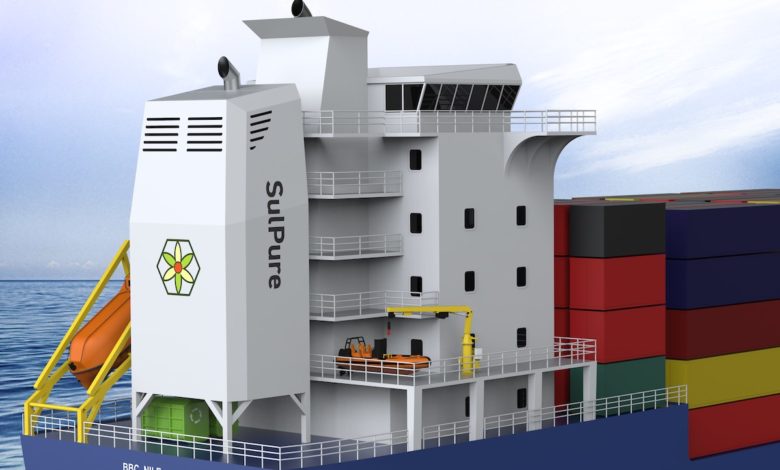Scrubber 2.0: Re-thinking conventional wisdom

With the shipping industry facing the most intense and rapidly changing environmental regulations in its history, vessel owners and operators can no longer rely on legacy solutions to deliver future-proof compliance. Mario Michan, CEO and founder of Daphne Technology, shares his thoughts.
Environmental regulatory and consumer pressure in shipping has never been greater, and it’s only likely to intensify – forcing the industry to rapidly reduce its emissions, and posing the largest, single existential threat to the industry.
The International Maritime Organization’s (IMO) 2020 global sulphur limit is only the beginning of the challenge. The IMO’s MARPOL Annex VI – which limits the main air pollutants contained in ships’ exhaust gas – are widely expected to tighten, forcing the industry to either move away from highly polluting fossil fuel, or find ways to abate its impact.
It’s vital to recognise the industry’s need for regulatory agnostic solutions – with the ability to simultaneously tackle all air pollutant regulations now and those that will come
Future proofing exhaust gas abatement is vital; the local pollutants landscape has become a patchwork of varying rules, with fragmented regional laws preventing the discharge of wash water from exhaust gas cleaning systems in port and near port waters across multiple regions. We can also expect to see the IMO, and perhaps other regulators such as the European Union, push for new, tighter rules that further limit NOx, particulate matter (PM) and black carbon.
Re-thinking technology
According to DNV GL, open loop scrubbers currently account for about 80% of all exhaust gas system installations, while closed loop scrubbers and hybrid scrubbers account for 18% and 2% respectively. However, these ‘traditional scrubbers’ were designed and developed in the nineties, well before current environmental regulations were set. It is controversial within the scrubber debate to say it, but these technologies no longer fit the mould and offer little future proof assurance – especially open loop systems.
The contention with open loop technology in fact is only gathering pace – with Saudi Arabia being the latest country to ban open loop scrubbers in its ports, as reported in Splash, taking the total number of countries that are restricting or prohibiting the discharge of wash water from open loop scrubbers to 22.
The shipping industry cannot rely on these legacy solutions, which have swiftly become antiquated and not fit for purpose. Instead, more onus needs to be placed on re-thinking expectations around exhaust gas cleaning systems’ capacity to respond to MARPOL Annex VI revisions, as well as further impending emissions’ challenges that the IMO’s climate change strategy will inevitably bring.
Future-proofing key
Rather than looking at exhaust gas purification systems as having one job, it’s important to consider the range of pollutants that shipping needs to reduce and ultimately eradicate. At Daphne we do not aim to contest regulation, but provide solutions to reduce environmental impact today and within current frameworks, hence how we’ve developed technology to reduce both SOx and NOx simultaneously.
To this end, it’s vital to recognise the industry’s need for regulatory agnostic solutions – with the ability to simultaneously tackle all air pollutant regulations now and those we anticipate will come, as well as other environmental challenges, such as water discharge and ocean microplastics. With LNG marine fuel growing as a product, another challenge for shipping is exploring capturing carbon that would enable the extension of the viability of the fuel; through the eradication of direct CH4 (methane) slip, something we’ve been working on and are now in a position to test our new technology onboard vessels.
Prepare for today and tomorrow
A technology first and regulatory agnostic approach offers a pragmatic solution that challenges the operational shortcomings of incumbent, outdated air pollution abatement technologies – meaning we can make strides in reducing environmental impact in the near as well as long term. Moreover, enabling shipowners and operators the scope to invest now in technology that will future proof their assets against all environmental regulatory changes just makes sense.
